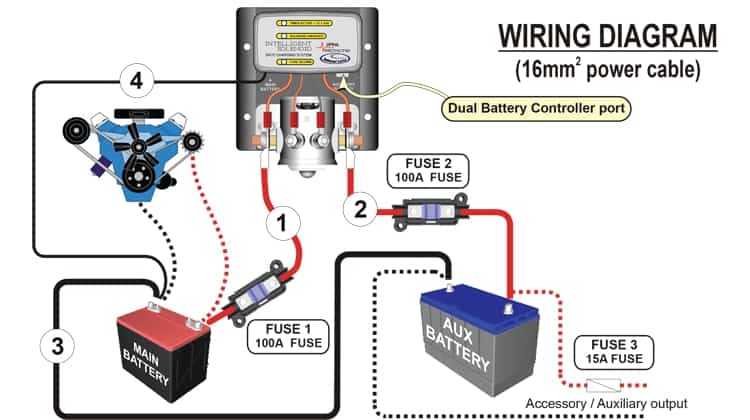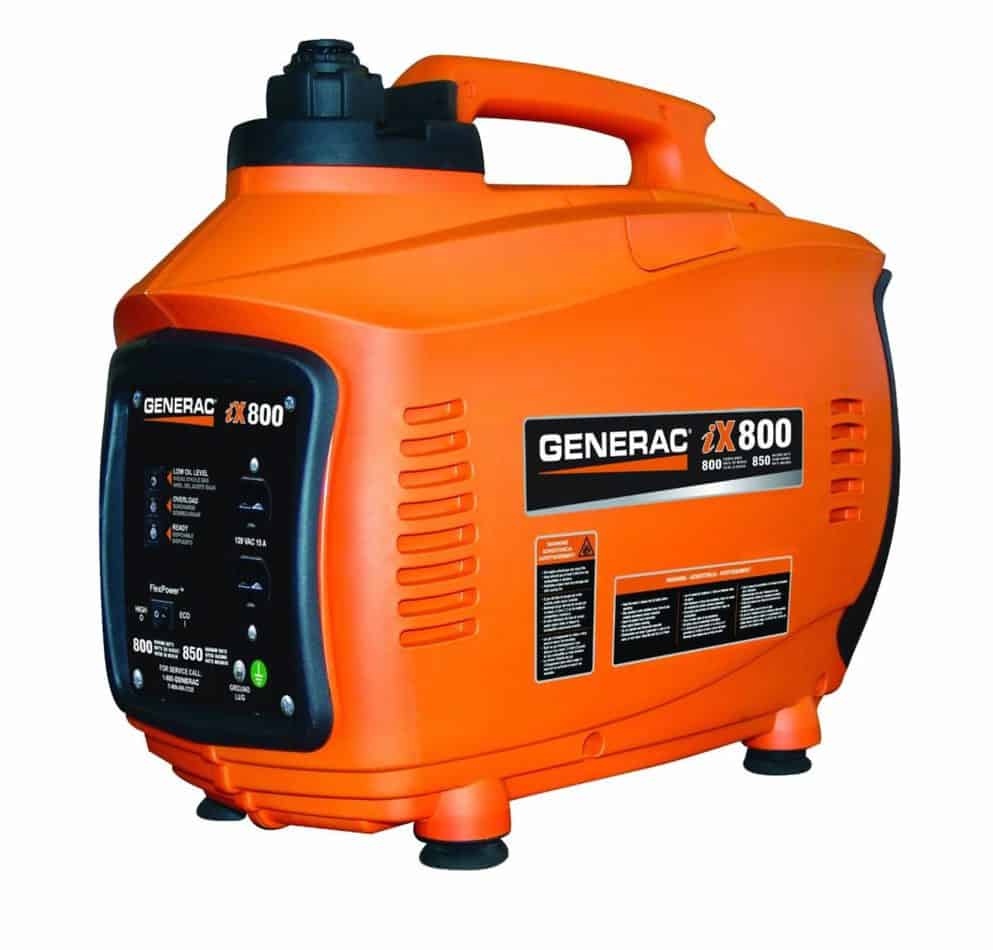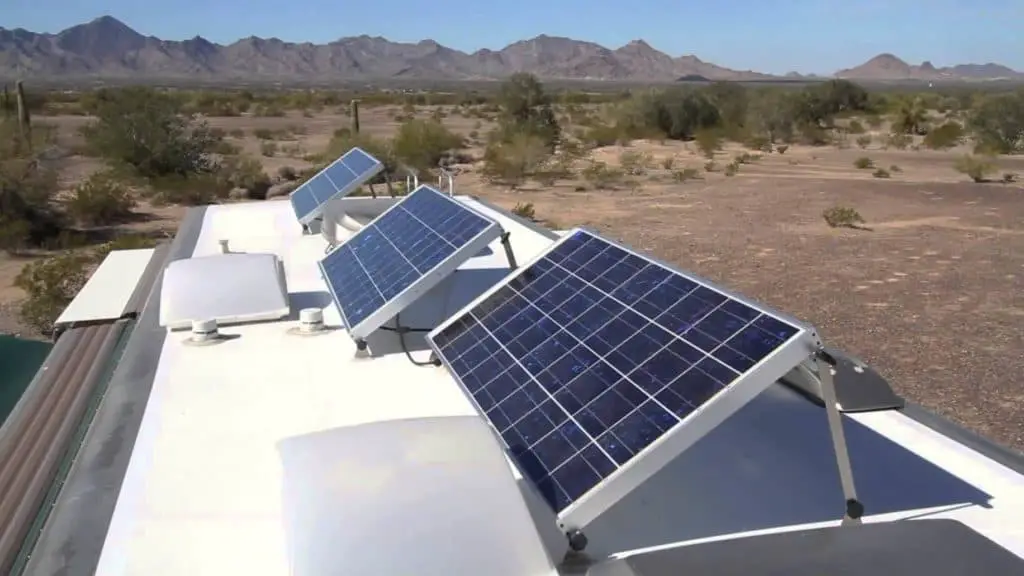Having a mini-fridge in your campervan helps bring some of your home’s comforts on the road. It means you can keep your food and beverages cold without dealing with the hassle of an ice cooler and soaked food. However, such convenience also means that you have to find a power source for your fridge, which can be tricky if you don’t know how to go about it.
To power a fridge in a van, you need your van’s starting battery, a dual battery system, a camping generator that’s preferably paired with a secondary battery, or a combination of a secondary battery and solar panels.
Let’s take a deeper look at how you can use each method to power a fridge in your van for a more enjoyable camping experience. Check out my resource page if you’re looking for more van build resources.
Using Your Van’s Starting Battery to Power a 12-Volt Fridge
The starting or cranking Battery can be found mounted right under your vehicle’s bonnet. While its main function is to provide the jolt of electricity needed to start your van, you can use it to power a fridge.

Run a 12-volt DC plug adapter from the battery to a 12-volt camping fridge, and you’re all set. Most modern vans come equipped with 12-volt plugs, so this should be pretty easy to do. Also known as cigarette lighter outlets, these plugs can be found at the front panel, and many campers have successfully used them to power mini-fridges on the go.
However, there are several issues you might have with powering a fridge this way.
For starters, you might need to install an extra cigarette socket in your van because the ones that come with some vans can only provide electricity while the vehicle is running. That means when you turn off your van, it won’t be powering your fridge, causing some of the food or beverages you stashed go bad.
However, if you install an extra outlet, you’ll solve this problem by providing a power source for your fridge when the van isn’t running.
Secondly, there’s always the risk of completely depleting your van’s battery, which can leave you stranded in the middle of nowhere with a van that won’t start. The good news is that most 12-volt camping fridges come fitted with a low voltage cut-out functionality. This automatically switches off the fridge when the battery reaches a certain voltage to ensure enough power to start the vehicle.
If your fridge doesn’t have this feature, consider an option that does, such as the Dometic CRX-65. It combines a fridge and freezer into one energy-efficient solution that you can use in a van or a small motorhome.
You’ll especially appreciate the flexible usability that allows you to use the fridge-freezer combination simultaneously and a fan that auto-adjusts its speed according to ambient temperature to minimize noise.
In addition to buying a fridge with a low voltage cut-out feature, you can also avoid completely draining your battery by turning on your van and running it for about half an hour several times in a day. Whenever you start any vehicle, the alternator recharges the battery, and doing it a few times a day will ensure that you always have enough charge to start your van and power your fridge.
 Pros
Pros
- It’s the least expensive way to power a fridge in a van.
- It’s quick and easy to set up.
 Cons
Cons
- You can only power a fridge in a van this way for a limited period, usually less than 24 hours.
- There’s always a risk of depleting the battery, which can leave you stuck in the middle of nowhere with an engine that won’t start.
Using a Dual Battery System to Power Your Fridge
Investing in a dual battery system helps address one of the main challenges of powering a fridge using your van’s starting battery, lacking enough power to start the vehicle due to a depleted battery.

As you might have gathered from the name, a dual battery system means installing a secondary battery in your vehicle. This way, your van will have two batteries, such as the starting battery discussed earlier and the auxiliary one. Hence, the name dual battery system.
With this kind of set up, you can keep your fridge plugged in overnight and still have enough charge left to start your van in the morning. That’s because the starting battery will maintain enough charge to start your vehicle while the auxiliary battery powers your fridge.
You also won’t need to drive around as often as you would when using your starting battery to power a fridge in a van since the dual battery system lasts longer between recharges.
If you don’t already own a secondary battery, the OPTIMA 8040-218 D35 YellowTop can be a great option. This dual-purpose battery comes with superior cranking power, exceptional cycling ability, and specially designed to support vehicles’ power demands with lots of accessories.
According to the manufacturer, it’s also more tolerant to vibration than most batteries on the market or 15 times more vibration resistance, meaning it can withstand the rigors of being next to a powerful engine without compromising its long service life.
How to Recharge Your Dual Battery System
There are several ways to keep your dual battery system charged.
The first, and perhaps the most obvious option, is to use your autostart battery to charge your auxiliary battery. If you don’t know how to hook this up, you can have your mechanic do it. Don’t worry. It won’t cost much.
However, there’s one issue you might have with charging your batteries this way. If you’re camping for more than 2-3 days, you’ll still need to drive around now and then to recharge both batteries.
To avoid this inconvenience, you can use either a camping generator or a
Using a Camping Generator to Power Your Fridge/Auxiliary Battery
A camping generator can also be a great way to power a fridge in a van, particularly when you need power for more accessories than just your fridge.

Even if your camping caravan doesn’t involve power-guzzling accessories, like a TV, microwave, a powerful music system, or even dishwasher, a generator may be a more convenient way to recharge a dual battery system compared to driving around. It’s also a great alternative when you don’t have enough space on your van’s roof to fit solar panels.
You can use a generator as a direct source of power for your fridge or a more convenient way to recharge an auxiliary battery. The latter is usually a more feasible option when you need to leave just your fridge, and maybe a few other accessories, plugged in overnight.
In such a case, it wouldn’t be economical to use a generator as a direct power source due to gasoline. It wouldn’t be wise to use the starter battery either. An auxiliary battery may be ideal.
 Pros
Pros
- A generator provides more electricity than most of the options discussed here.
- It’s easy to set up.
 Cons
Cons
- It has a higher operational cost than solar. (Example: gasoline vs. free solar energy)
- Noise and smell may be an issue.
- Some camping sites prohibit the use of generators.
Using Solar Panels to Power Your Fridge/Recharge Your Auxiliary Battery
Rounding up our list of ways to power a fridge in a van is the good old solar energy. You can use a standard
Related Guide: How do solar panels work on a van? (an in depth look) How much solar do I need for my van? How Much Does It Cost to Put Solar Panels on a Van?

Since the amount of solar electricity panels produced is heavily reliant on the amount of sunshine, you’ll want to pair yours with an auxiliary battery. This way, you’ll still keep the fridge on when the weather isn’t ideal.
To set this up, follow these steps:
- Mount the solar panels to the roof of your van.
- Run the power cables through the roof, and connect them to the charge controller or consult the user manual if you can’t find it.
- Connect the charge controller to your auxiliary battery and check that it’s charging.
- Next, connect a 12-volt DC plug adapter to your battery’s terminals and plug in your fridge.
 Pros
Pros
- Free electricity after an initial investment.
- Minimal maintenance is required.
- Zero noise and gaseous emissions
- An ideal option in camping sites where generators are banned.
 Cons
Cons
- Power output is heavily reliant on the weather, especially if you don’t have a reliable battery.
Conclusion
That does it for today’s post. Hopefully, you’ll use this information to make your camping experience more convenient and enjoyable. Best of luck!
